As calls for environmental preservation grow louder, deforestation is taking center stage. Last year, the…
The post Monitor Deforestation Policies To Make Your Shopping Earth-Responsible appeared first on Earth911.

As calls for environmental preservation grow louder, deforestation is taking center stage. Last year, the…
The post Monitor Deforestation Policies To Make Your Shopping Earth-Responsible appeared first on Earth911.
The dry, dusty rangeland of the Texas Panhandle could not have been more perfectly suited to burn. Temperatures were 25 to 30 degrees Fahrenheit above normal. The air was dry, with humidity below 20 percent. And wind speeds were as high as 60 mph. Those hot and dry weather conditions worried meteorologists in the region, and their worst fears were realized February 26 when a spark set off a massive fire.
Over the past 10 days, five wildfires in the region have burned more than 1.2 million acres. The largest of them — dubbed the Smokehouse Creek Fire, for a creek near its origin — stretches across an area larger than Rhode Island. It’s the largest and most destructive wildfire in state history. Entire communities have had to evacuate. Two people have died. After more than a week of constant effort, crews have contained just 44 percent of the Smokehouse fire.
The fire has destroyed more than 500 homes, and thousands of cattle, horses, and goats have either succumbed to the fires or been euthanized. In light of the devastation, Governor Greg Abbott declared a state of emergency for 60 counties and requested additional resources from the federal government to battle the infernos.
“As Texas experiences the largest wildfire in the history of our state, we remain ready to deploy every available resource,” Abbott said at a press conference earlier this week. “The wildfires are not over yet, and until they are, it is essential that Texans in at-risk areas remain weather-aware to maintain the safety of themselves and their property.”
It remains unclear exactly what caused the spark, something officials with the Texas A&M Forest Service continue investigating. Landowners suspect a downed power line may be to blame — an increasingly common cause of wildfires. In California, six of the state’s 20 largest fires started that way.
Texas firefighters routinely handle large fires. On average, wildfires scorch roughly 650,000 acres each year. In 2011, amid a prolonged and severe drought, Texas experienced one of its worst fire seasons in history, losing nearly 4 million acres. The Panhandle was particularly hard hit. Nationwide, researchers have found that wildfires are becoming more frequent and intense, with the season essentially running year-round.
While the severity of wildfires depends on geography and vegetation, weather plays a key role in their frequency and how difficult they are to contain. These immense blazes require hot and dry conditions, and a warming planet has been making those conditions more common. The high plains of Texas now experience 32 more days with hot, dry, and windy weather conditions than in the 1970s, according to an analysis by Climate Central, a nonprofit tracking climate effects.
“You’re seeing more days when temperatures are high, and you’re seeing more days when it is hot, dry, and windy all at once,” said Kaitlyn Trudeau, a senior research associate there. “It’s a threat multiplier.”
Climate change is also making wildfire solutions harder to implement. Prescribed burns, in which fire officials start a controlled fire to clear overgrown brush and scrub, are a controversial but effective tool to manage the amount of vegetation that can feed a fire. Weather is a key determinant of when to conduct them. If conditions are too hot, dry, and windy, these relatively small fires can get out of control. A warming world is making the cooler, more humid conditions that prevent runaway fires harder to come by. That was the case in New Mexico last year when federal officials began a prescribed burn in the Santa Fe National Forest only to lose control. More than 341,000 acres burned. Officials had underestimated just how dry conditions were.
Fighting wildfires has become harder, too. Typically, cooler nighttime temperatures offered crews a reprieve. But as the planet warms, nighttime temperatures have been rising more quickly than daytime temperatures. A 2022 Climate Central analysis found that on average summer nights were 2.5 degrees Fahrenheit warmer in 2022 than in 1970. That means blazes can continue to pick up speed after sunset, challenging firefighters through the night.
“Climate change is not only making fires worse and more dangerous, but it’s also reducing our capacity to address the problem,” said Trudeau.
This story was originally published by Grist with the headline How climate change primed Texas to burn on Mar 7, 2024.
When politicians and planners think about climate adaptation, they’re often considering the hard edges of infrastructure and economics. Will we divert flooding? Should we restore shorelines? Can we fireproof homes? Folklorist Maida Owens believes such questions don’t capture the full picture. When climate disaster comes for the diverse Cajun and Creole fishing communities of Louisiana’s islands and bayous, it has the potential to tear their cultural fabric apart.
“There’s more to community resilience than the physical protection of properties,” Owens, who works with Louisiana’s state folklife program, told Grist.
Radical change is already occurring. Louisiana’s coast is slowly being swallowed by the sea; the Southwest is drying out; Appalachia’s transition from coal has been no less disruptive than a recent battery of floods and storms. These crises, which are unfolding nationwide, interrupt not only infrastructure, but the rituals and remembrances that make up daily life.
The study of those rituals and rememberances may seem like an esoteric discipline, one relegated to exploring quaint superstitions of the past or documenting old men in overalls playing homemade instruments. It’s true that those who study and preserve folklore don’t concern themselves with high art — that is, the sort of thing supported by networks of patronage and philanthropy and gallery exhibitions. Their mission is to record the culture of ordinary people: us. Our jokes, our songs, our spiritual practices, our celebrations, our recipes. Such things are the glue that holds society together, and as the climate changes our ways of life, Owens and her peers say, it’s important to pay attention to how culture adjusts.
Doing that goes beyond the practical question of how people will carry their heritage into a world reshaped by climate change. It requires looking to tradition-bearers — the people within a community who are preserving its customs, songs, and stories and passing them on — for clues to how best to navigate this tumultuous time without losing generations of knowledge. In that way, folklorists across the country increasingly strive to help communities adapt to a new reality, understand how tradition shifts in times of crisis, and even inform climate policy. Folklore doesn’t seem like it would teach us how to adapt to a warming world, but even as it looks over our collective shoulder at the past, it can prepare us for a future that is in many ways already here.

In the coal towns of eastern Kentucky and West Virginia, Emily Hilliard has written extensively on this idea, which she calls visionary folklore. She looks for ways to sustain culture as those who practice it experience incredible change so that they might “send traditions on to the future.” As climate disaster threatens to wipe away entire towns and ways of life — both literally, in the case of the communities lost to the floods that ravaged Kentucky in 2022, and figuratively through the loss of archives and museums to those inundations — she considers this continuity an essential part of retaining a sense of place and identity, two intangible feelings that help give life meaning.
“Folklorists can help communities pass on these traditions,” she said.
Hilliard is a former West Virginia state folklorist who has, among other things, collected oral histories, songs, artwork, and legends for the West Virginia Folklife Program. It’s impossible to talk about climate in Appalachia without talking about coal, and the communities she has documented have a gnarled and thorny relationship with that industry, which has both sustained them and helped create the climate impacts they’re left to grapple with.

People, Hilliard said, face a grave risk in “the way that climate disaster breaks up communities, so that communities may no longer be able to share food and music traditions.” Visionary folklore is, in part, about trying to restore, replace, and sustain these things, while finding ways to bulwark and adapt traditions for an uncertain future.
Climate change, like the coal industry that fostered it, threatens to rewrite some of the region’s cultural memory. Hilliard recalls members of the Scotts Run Museum in Osage, West Virginia, a place where town elders regularly play music, tell stories, and share meals, talking of rising floodwaters threatening their community gathering spaces. She sees collaboration with communities to preserve these important community resources as part of her life’s work.
As she strives to help communities sustain old traditions, Hilliard sees new ones emerging as coping strategies for a world in which foundations are shifting. As floods have repeatedly swept through Appalachia, she has seen communities come together to repair and replace family quilts, musical instruments, and other heirlooms and keepsakes, some of which were painstakingly crafted by hand and many of which have been handed down through generations. Community members in Scotts Run established “repair cafes” where people with various skills helped neighbors recover. Coal company towns’ often hardscrabble existence made such expertise necessary, and in an era of looming environmental destruction, those knowledge pathways allow people to simultaneously come together to grieve and to begin to rebuild their community. Such things are not limited to Appalachia, of course.
“There may exist beneficial practices and adaptations to crises within our historical and current practices,” said Kimi Eisele, a folklorist with the Southwest Folklife Alliance in Tucson, Arizona. Eisele, who is beginning a folklife project focused on climate change, manages Borderlore, a journal operated by the Southwest Folklife Alliance. It recently received a $150,000 grant to collect oral histories that amplify the environmental history and future of the Southwest through the eyes of Indigenous peoples, immigrants, and other historically excluded people.
In southern Arizona, where Eisele lives and works, triple-digit temperatures, aridity, and groundwater depletion present a dire threat to agriculture and even long-term human settlement. Many of the interviews Eisele and others have collected focus on the impacts of climate change on Indigenous traditions and how those traditions are changing. The Tohono O’odham, whose ancestral land is divided by the border with Mexico, have for example long relied on willow for basket-weaving, but as farms and groundwater diversion have lowered the water table, willows have dried up and died. Basket-weavers now use the hardier yucca plant. Climate change is also causing traditional adobe homes to crack and decay; Native architects are working to shore them up and explore how modern technology can preserve them, even as the structures provide a model for building cooler, more energy-efficient homes.
The interviews describe adaptations made over millennia that still work – mind-boggling, perhaps, to a society that has managed to nearly deplete its resources in just a few hundred years. The Hopi, Tohono O’odham, Diné, and other peoples have weathered climate fluctuations, droughts, floods, and famine in the tens of thousands of years they’ve lived in the Southwest. Hopi farmer Michael Kotutwa Johnson, who raises corn, believes that heritage provides essential tools for adapting to the climate crisis. He is working to ensure others learn to use them.
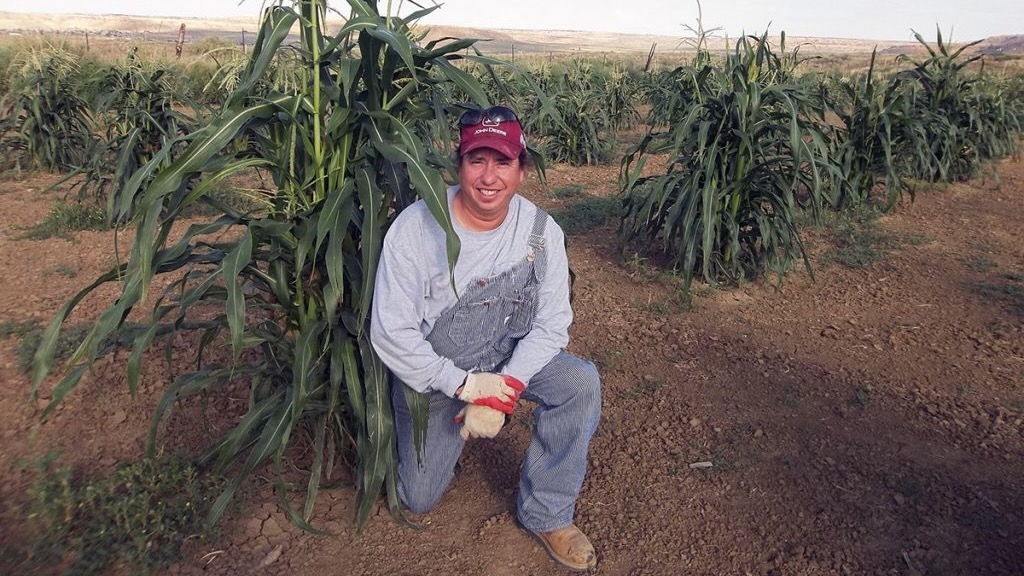
“As Hopis, we adjust to these environmental fluctuations,” Johnson told Eisele in an interview for the Climate Lore oral history series. “It’s part of our faith.” Even if this period of climate crisis is unprecedented and unpredictable, Johnson says, he feels prepared to bear it out.
Johnson is a dryland farmer, meaning he uses traditional farming methods that don’t require irrigation. He relies on the annual monsoon to water his fields, and on what he knows of the land to prepare for the season ahead. In 2018, for example, he realized early on that a drought was intensifying because “biological indicators that usually appear in April weren’t there,” he told Eisele. “Plants weren’t greening up, so we knew the soil moisture wasn’t going to be there.” In response, he and other Hopi farmers planted only a quarter of their usual crop to avoid depleting the soil. What he describes as “bumper” years can take communities through leaner times — if everyone is careful and pays attention.
“We’ve had a system in place to handle a lot of it. We plant enough to last three to five years,” Johnson told Eisele. “When you have everybody doing that, then you have to have a good supply to get through climatic changes.”
He hopes other farmers, particularly Native farmers, collaborate in practicing regenerative agriculture rather than relying on destructive groundwater withdrawal to maintain crops the desert simply can’t support. Eisele finds stories like Johnson’s invaluable in helping people everywhere adapt. “We are really looking at folklife as a tool for liberation,” she said.
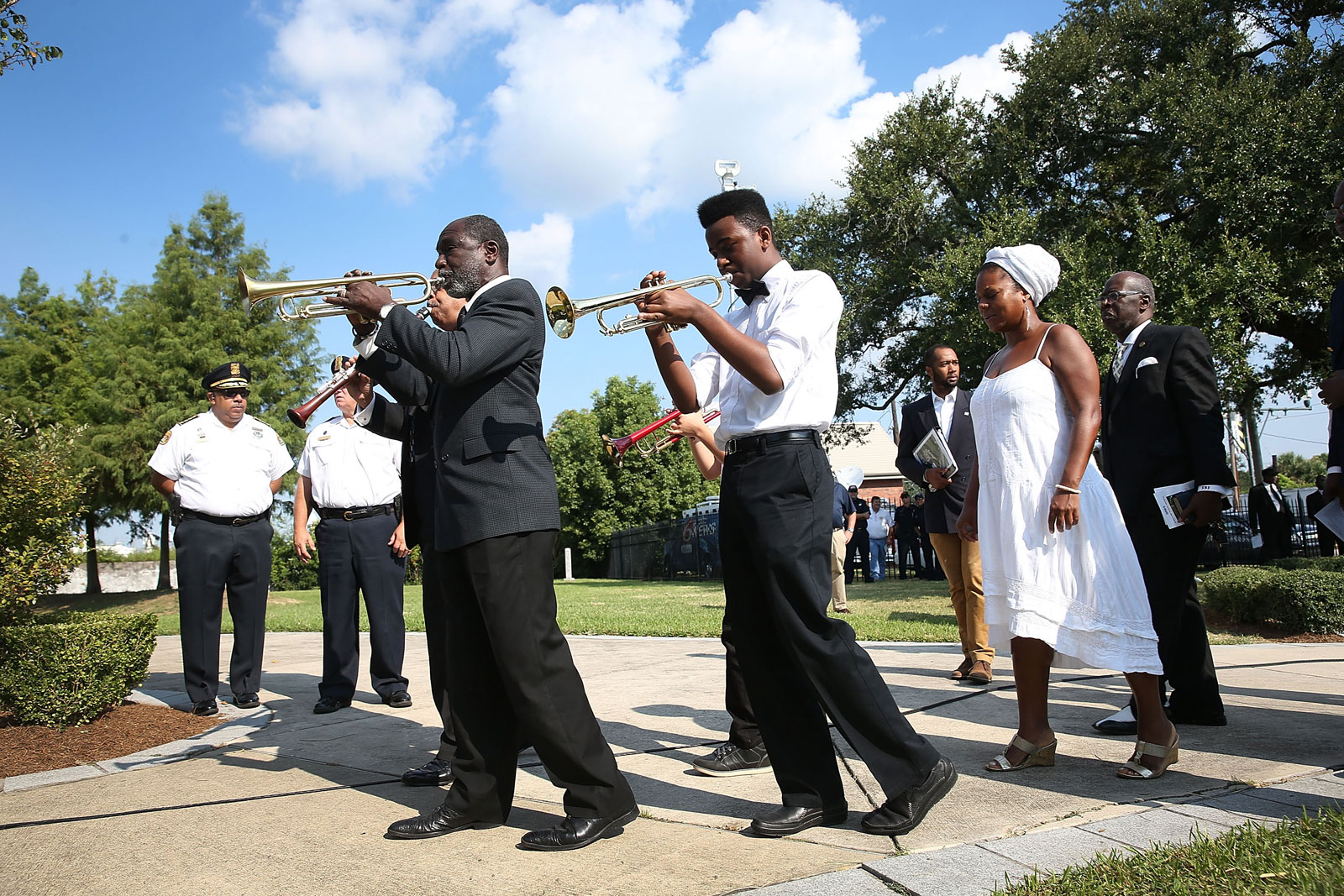
Along the Gulf Coast of Louisiana, Maida Owens, takes such work a step farther, trying to use folklore to shape public policy and make the world more welcoming toward those displaced by the climate crisis.
The Bayou State has been losing up to 35 square miles of coastland each year for the better part of a century. As erosion and rising seas have remade the state, entire communities have had to move. Climate migration, new to some parts of the world, is as much a fact of life for Louisianans as the changing of the tides.
Even as Louisiana has focused on reclaiming lost land and restoring coastal wetland, Owens has urged special attention to adaptation, teaching people in harms’ way how to adjust their ways of life without losing what’s most important to them. She works with the Bayou Culture Collaborative, which brings together tradition bearers from impacted communities to talk “about the human dimension of coastal land loss” so residents, and their elected leaders, can better plan for the migration already afoot. Research has shown that when people make the difficult decision to pack up and leave, most of them go only a few miles.
“People from all over the coast are starting to leave and move inland,” Owens said. In the parlance of her field, the places they leave behind are “sending communities”; where they’re headed, “receiving communities” await them. Owens has begun to convene meetings online and in receiving communities to discuss cultural sensitivity to help people prepare for their new neighbors, knowing that migration can exacerbate class and racial tension.
In the Louisiana folklife program’s ongoing “Sense of Place – And Loss” workshop series, Owens hosts discussions about the future of bayou traditions to collectively imagine what the near future might look like as the Gulf Coast changes. Artists, other tradition bearers, and community leaders are invited to envision how they might make their towns and counties more welcoming for climate migrants, and Owens assists them in developing concrete action plans. Such an effort includes having receiving communities inventory their cultural and economic resources to see what they can offer newcomers, invest in trauma-informed care for disaster survivors, and consider what they might need to make themselves ready to integrate newcomers.
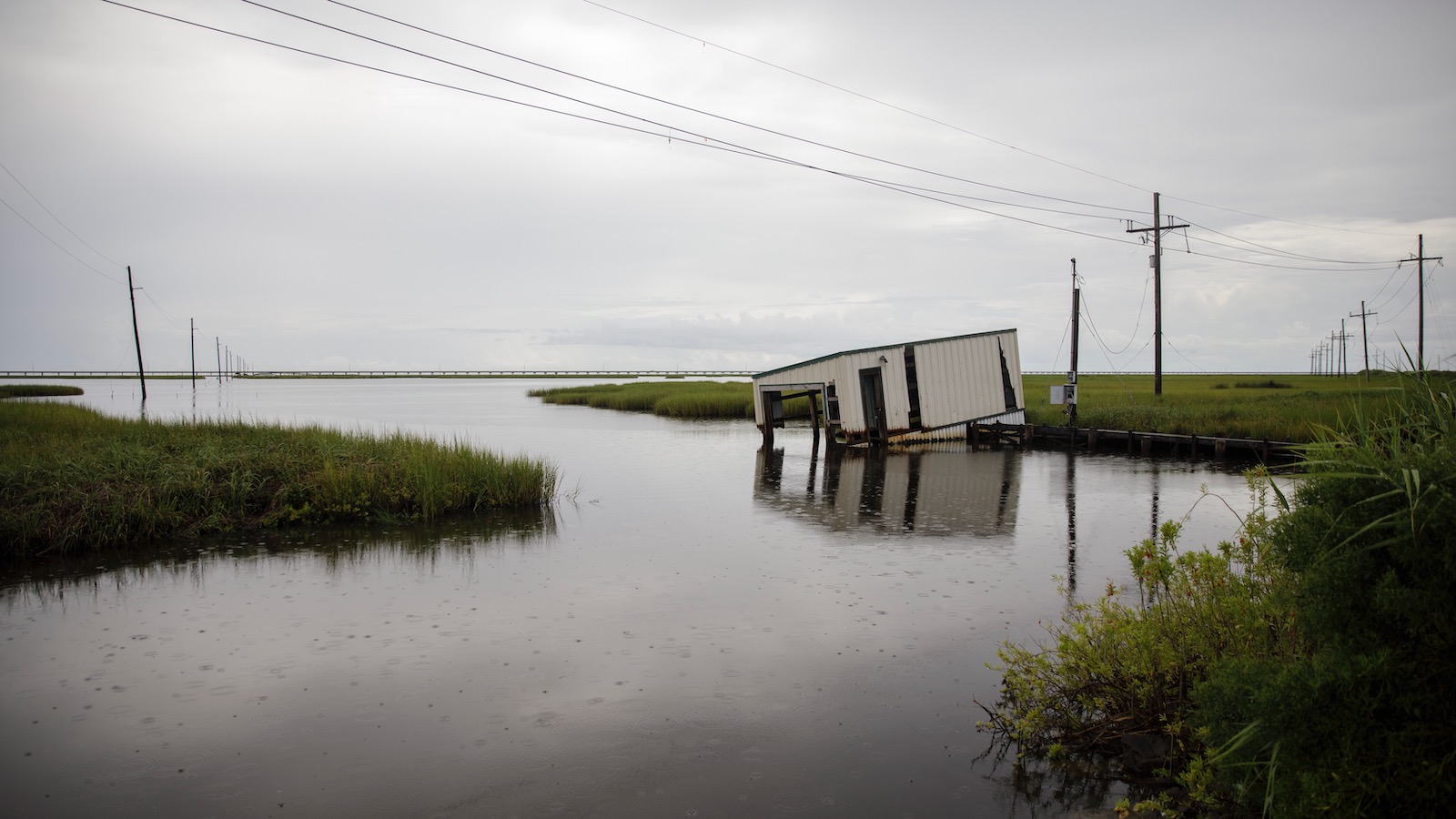
The Louisiana state coastal protection and restoration authority has identified some towns that might have the capacity, and need, for more people; many of these places have the space but lack the social infrastructure to support the continuation of rural peoples’ foodways and artistic traditions. Though receiving communities may not be far away, those most vulnerable to displacement are often Indigenous, French-speaking, or otherwise culturally distinct, and moving even a short distance can expose them to unfamiliar circumstances. In her workshops, Owens is proposing ideas lifted in part from the adaptation strategies immigrants often rely upon, like cultural festivals and an emphasis on cultural exchange and language education. In a recent project, several coastal parishes (what Louisianans call counties) near Terrebonne created a collaborative quilt at a regional community festival as a way to draw attention to the beauty and ancestral importance of their wetlands and deepen their connections with one another.
That’s where Owens hopes folklorists can affect policy change, too. Owens is keeping a close eye on the state’s Coastal Master Plan, providing feedback with an eye towards supporting the culturally rich, and vanishing, coastal parishes. The Louisiana Folklore Society has urged the state to conduct its planning with respect to the desires and needs of the people who live on the coast, prioritizing engagement before any major mitigation project, and saving habitat not merely for its inherent value but also for its importance to the coastal tribes it sustains.
Though climate disasters have already thrown towns along the Louisiana coast and beyond into disarray and prompted seismic changes in how residents live, this is just the beginning. As floods and fires, droughts and erosion, and the myriad other impacts of a warming world wreak greater havoc, some of the answers to the crisis won’t be found in engineering or science, but in the cultural fabric that binds us together.
This story was originally published by Grist with the headline As climate change fractures communities, folklorists help stitch them back together on Mar 7, 2024.
After two years of drafting, public comments, and delays, the U.S. Securities and Exchange Commission, or SEC, finally approved its highly-anticipated climate disclosure rules on Wednesday, laying out new requirements for companies to divulge their climate risks and some of their greenhouse emissions in public filings submitted annually to the agency
The new rules require publicly traded companies to analyze and publish how climate change threatens their business — whether through physical risks like floods and other extreme weather or through “transition risks” like regulation. This is in line with the SEC’s mission to protect investors and maintain “fair, orderly, and efficient markets.”
Environmental advocates have welcomed the rules, but with a major caveat. Between the first draft of the SEC’s climate disclosure rules — published in 2022 — and now, the regulator scrapped requirements for companies to reveal greenhouse emissions that stem from the products they sell. These so-called “Scope 3” emissions are often the most significant source of a company’s climate pollution. According to the nonprofit CDP, which runs the world’s most widely used emissions disclosure platform, they make up an average of 75 percent all companies’ emissions.
For fossil fuel companies — whose products are the primary driver of climate change — those Scope 3 emissions can make up to 95 percent of their carbon footprint.
By excluding Scope 3 emissions from disclosure, “regulators are failing to accurately reflect the best available scientific evidence and heed the risks at hand to the economy,” Laura Peterson, a corporate analyst for the nonprofit Union of Concerned Scientists, said in a statement. Charles Slidders, a senior attorney for the nonprofit Center for International Environmental Law, said that the SEC’s approach was “an abdication of the agency’s authority and responsibility to address significant financial risks.”
The SEC has been talking about climate disclosure for more than a decade. In 2010, the agency’s five-member board of commissioners voted to provide companies with “interpretive guidance” on existing disclosure rules that might be affected by new climate-related legal and business developments. It started looking into more concrete requirements in 2020 and released the first draft of its disclosure rules in March 2022.
Proponents of the new rules point to escalating financial risks from climate change — just last year, the U.S. logged a record-breaking number of climate- and weather-related disasters that cost the county at least $92 billion — and say the SEC must protect investors through more rigorous disclosure requirements, including of Scope 3 emissions. According to the nonprofit Ceres, which advocates for corporate environmental sustainability, 97 percent of investor comments submitted to the SEC favored corporate Scope 3 disclosure as part of the agency’s rules for public companies.
Those opposed to stringent disclosure rules, however, say they represent a regulatory overreach by the SEC, and that issues related to climate policy should be left to Congress or to federal environmental agencies. “If Congress meant for the SEC to broadly regulate registrants’ climate change policy, then it would have clearly authorized the Commission to do so,” as the American Petroleum Institute, a lobbying group, said in its 2022 comments to the SEC.
There is discord even within the SEC. While the panel’s three Democrats voted to approve the new rules, its two Republican members excoriated them, with commissioner Mark Uyeda calling them an effort by climate activists to “hijack and use the securities laws for their climate-related goals.”
The rules are likely to be challenged in court, where their fate remains uncertain — especially in light of recent Supreme Court decisions limiting the federal government’s power to pass ambitious climate-related regulations, like a proposed policy from the Environmental Protection Agency to curb emissions from power plants.
Still, what the SEC is proposing is much weaker than what has already been put in place by other regulators, including the European Union and California. That means companies doing business in those jurisdictions may defer to their stronger rules, the consulting firm Business for Social Responsibility noted in a statement. By not embracing Scope 3 disclosure, the SEC “has marginalized its own significance.”
This story was originally published by Grist with the headline SEC will require companies to disclose emissions, with one glaring gap on Mar 6, 2024.
Deforestation is making lizards in North America more vulnerable because of a lack of shelter from extreme temperatures, according to a new study.
Led by scientists at University of Colorado Boulder and Tel Aviv University, the study found that forest loss, alongside climate change, could negatively impact 84% of lizards in North America by 2100. The findings were published in the journal Nature Climate Change.
This is because extreme temperatures, like a summer heat wave, are particularly risky for lizards, who need to seek shade to cool down or sunlight to get warm. These cold-blooded creatures often use trees to help thermoregulate.
“What’s really interesting about lizards is that they just need to be able to move a short distance around the tree trunk to get to a very different climate and habitat environment,” Keith Musselman, an assistant professor at University of Colorado Boulder, said in a statement. “These microhabitats are particularly important when we think about how we modify our natural environment and make conservation decisions.”
According to the study authors, deforestation could decrease the amount of time lizards spend seeking food or reproducing, called activity time, by 34%. Further, the tree loss and decline in activity time could cause quicker population declines for 18% of North American lizards.
“Here in the Rocky Mountains, elevation provides an escape for animals that can travel longer distances, including us humans. On those summer days when it hits 100 degrees, many of us will go into the mountains,” Musselman said. “But small animals like lizards can’t travel far. They heavily depend on the refuge provided by the local landscape, including tree trunks.”
Lizards are an important part of their ecosystems, and population declines could also disrupt other species, the scientists warned.
According to Global Forest Watch, the U.S. lost 46.5 megahectares (Mha) of tree cover and Canada lost 48.9 Mha from 2001 to 2022.
The findings reveal the vulnerabilities of cold-blooded animals, particularly when it comes to forest loss. The authors noted that while global warming can actually offer some benefits for these animals, vegetation loss from deforestation and other impacts of climate change, such as wildfires, can reverse any potential benefits and still lead to population declines.
Omer Zlotnick, first author of the study and a Ph.D. student at Tel Aviv University, said, “Deforestation is a worldwide problem, and our conclusions can help decision-makers on other continents in designing conservation and habitat restoration programs that consider climate change.”
The post Deforestation Could Put 84% of North American Lizards at Risk, Study Says appeared first on EcoWatch.
There are three main forces driving the conflict on the Colorado River. The first is an outdated legal system that guarantees more water to seven Western states — Arizona, California, Colorado, Nevada, New Mexico, Utah, and Wyoming — than is actually available in the river during most years. The second is the exclusion of Native American tribes from this legal system, which has deprived many tribes of water usage for decades. The third is climate change, which is heating up the western United States and diminishing the winter snowfall and rainwater that feed the river.
The states and tribes within the Colorado River basin have been fighting over the waterway for more than a century, but these three forces have come to a head over the past few years. As a severe drought shriveled the 1,450-mile river in 2022, negotiators from the seven states crisscrossed the country haggling over who should have to cut their water usage, and how much. As the arguments dragged on, the Biden administration chastised states for letting the water levels in the river’s two main reservoirs fall to perilous lows. The Navajo Nation, the largest tribe on the river, went before the Supreme Court to argue for more water access.
These issues are all converging ahead of this fall’s presidential election, which could upend negotiations by ushering in a new Congress and new leadership at the federal Bureau of Reclamation, which controls the river. With the clock running out, two major deals are now taking shape. They could fundamentally alter the way states and tribes use the river, bringing about a fairer and more sustainable era on the waterway — if they don’t fall apart by November.
The first deal would see the states of the river’s so-called Lower Basin commit to lowering their water usage by as much as 20 percent even during wetter years, addressing a decades-old water deficit driven by Arizona and California. There are still questions about how much water the states of the Upper Basin, led by Colorado and Utah, will agree to cut, but state leaders expressed optimism that a final agreement between all seven states will come together in the next few months.
“This is not a problem that is caused by one sector, by one state, or by one basin,” said John Entsminger, the lead river negotiator for Nevada, in a press conference announcing the Lower Basin’s plan to cut water usage. “It is a basin-wide problem and requires a basin-wide solution.”
The second deal would deliver enough new river water to the Navajo Nation to supply tens of thousands of homes, ending a decades-long legal fight on a reservation where many residents rely on deliveries of hauled water.
If both of these deals come to fruition, they would represent a sea change in the management of a river that supplies 40 million people with water. But neither one is guaranteed to come together, and the clock is ticking as the election nears.
The last time the seven river states drafted rules for how to deal with droughts and shortages was in 2007, long before the current megadrought reached its peak, and these rules are set to expire at the end of 2026. This deadline has triggered a flurry of talks among state negotiators, who are trying to reach a deal on new drought rules this spring. This would give the Biden administration time to codify the new rules before the presidential election in November, which states fear could tank the negotiations by thrusting a new administration into power.
The furious pace of negotiation is nothing new, but states have until now only managed to agree on short-term rules that protect the river over the next three years. Last summer, the states agreed to slash water usage in farms and suburbs across the Southwest in exchange for more than a billion dollars of compensation from the Inflation Reduction Act passed by Congress. That agreement helped stave off a total collapse of the river system, but it never represented a permanent solution to the river’s water shortage.
As the states turn their attention to a long-term fix, the political coalitions on the river have shifted. The marquee conflict last year was between California and Arizona, the two largest users, who disagreed over how to spread out painful water cuts. California argued that its older, more senior rights to the river meant that Arizona should absorb all the cuts even if it meant drying out areas around Phoenix. Arizona argued in turn that California’s prosperous farmers needed to bear some of the pain. In the end, the money from the Inflation Reduction Act helped paper over those tensions, as did a wetter-than-average winter that restored reservoir levels.
But now California and Arizona are on the same side. The two states, which along with Nevada make up the river’s “Lower Basin,” have pledged to cut water usage by as much as 1.5 million acre-feet even when reservoir levels are high, without federal compensation like that provided by the Inflation Reduction Act. The details still need to be hashed out, but these cuts would likely mean far less cotton and alfalfa farming in the region around Phoenix, tighter water budgets in many Arizona suburbs, and a decline in winter vegetable production in California’s Imperial Valley, an agricultural hub that is considered the nation’s “salad bowl.”
This cut would free up enough water to supply almost 3 million households annually and would address the longstanding issues in the river’s century-old legal framework, which relied on faulty measurements of the river’s flow and thus guaranteed too much total water to the states. Experts have estimated the overdraft to be around 1.5 million acre-feet, the same amount that the Lower Basin is now signaling that it’s willing to give up, even before drought measures kick in.
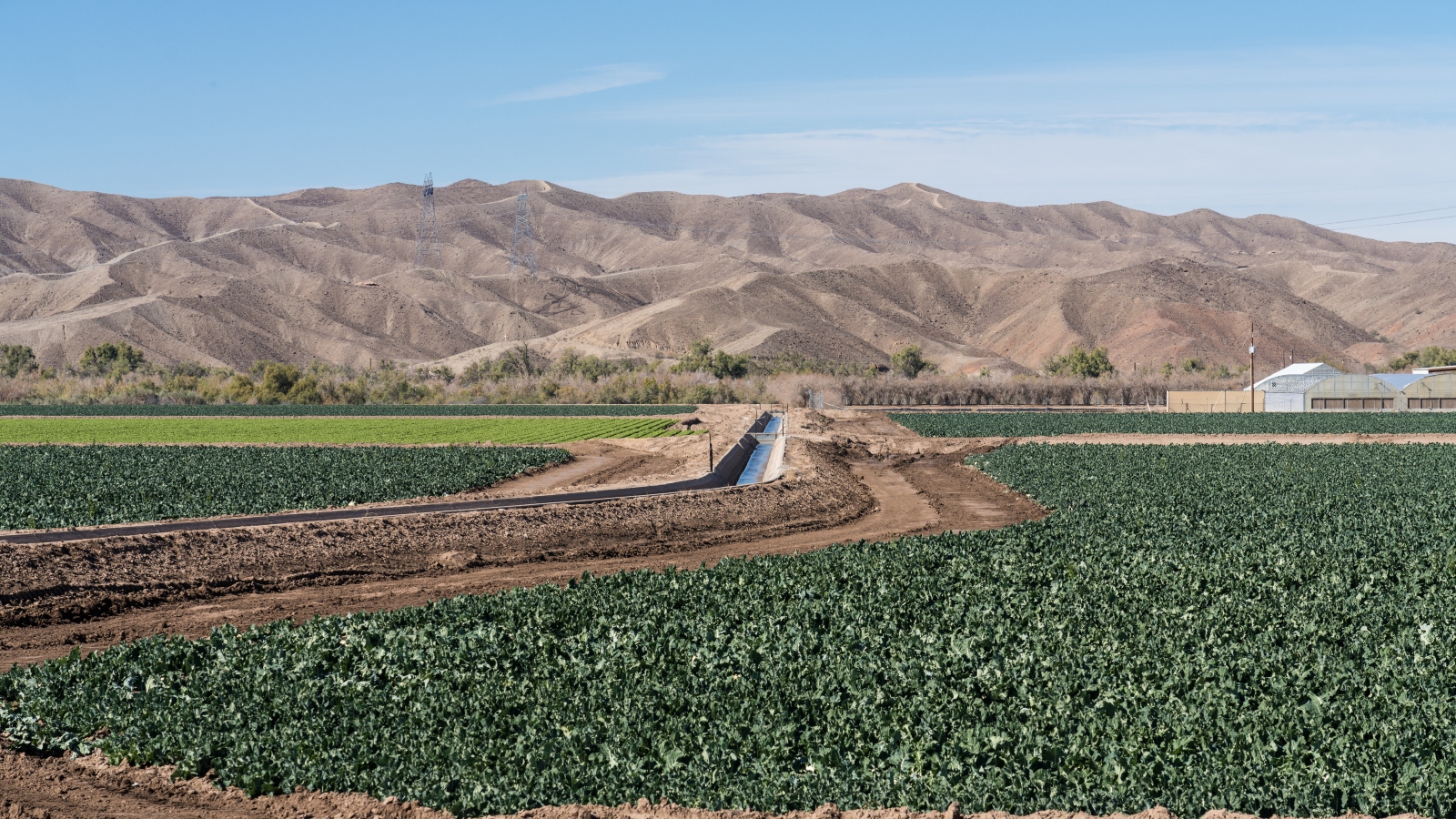
The harder question is what to do during the driest years. The Lower Basin states are arguing that the seven states of the river should reduce their water usage by almost 3.9 million acre feet during the driest years, equivalent to about a third of the river’s total average flow. The Upper Basin states of Colorado, Utah, Wyoming, and New Mexico have a very different view: in a competing plan also released on Wednesday, they argued that the Lower Basin states should absorb the entirety of that 3.9 million acre-feet cut.
“If we want to protect the system and ensure certainty for the 40 million people who rely on this water source, then we need to address the existing imbalance between supply and demand,” said Becky Mitchell, the lead Colorado River negotiator for the state of Colorado, in a press release following the release of the Upper Basin’s plan. “That means using the best available science to work within reality.”
A representative from Colorado said the Upper Basin would keep investing in voluntary programs that pay farmers to use less water, but insisted that Arizona and California should bear the brunt of drought response.
Disagreement between the two regions is nothing new. The Upper Basin has often argued during past dry spells that, since it’s the Lower Basin that pulls water from Lake Powell and Lake Mead, it’s the Lower Basin that should cut usage when those reservoirs run low.
But the commitment by Arizona and California to slash their water consumption for good even during wet years represents a significant breakthrough from previous talks, according to John Fleck, a professor at the University of New Mexico who has studied the Colorado River for decades. Fleck believes the Upper Basin states should make a voluntary commitment in turn, even though they have never used their full share of the river’s water.
“The idea behind what the Lower Basin is proposing is, ‘We recognize that we have to forever and permanently fix the structural deficit,’” he said. “That’s huge. My concern is that the Upper Basin’s approach to these negotiations is passing up an opportunity for a really useful compromise.”
Entsminger, the Nevada negotiator, conceded that wide gaps remain between the Upper Basin and Lower Basin proposals, but expressed optimism that the states would find an agreement.
“I know the sexy headline is going to be, ‘four versus three, states on the brink,’ but we are at one step in this process,” he said.
The other major water deal coming into focus would also rectify a longstanding issue in the river’s legal framework: its exclusion of Native American tribes. The dozens of tribal nations along the Colorado River have theoretical rights to river water, but they must sue the federal government to realize those rights, under a precedent known as the Winters doctrine. Some of those tribes, like Arizona’s Gila River Indian Community, have settled with the government for huge volumes of water, but others have been tied up in court for years.
The Navajo Nation, whose reservation stretches across much of Arizona and New Mexico, is among the largest tribes with so-called un-settled rights. The tribe has been suing the federal government for decades to obtain rights to the Colorado River as well as other waterways. Last year, the Supreme Court appeared to deal the Nation a serious setback when it ruled that the Biden administration didn’t have an obligation to study the Nation’s potential rights to the Colorado River.
In the aftermath of that Supreme Court defeat, tribal leaders set to work hashing out a landmark settlement that covers not only the Colorado River but also several of its tributaries, working with federal and state governments to resolve decades of litigation across numerous different court cases.
The work has now culminated in a sprawling legal agreement between the Navajo, the neighboring Hopi and San Juan Southern Paiute Tribes, the Biden administration, Arizona, and more than a dozen other water users in the Southwest. The agreement would deliver at least 179,000 acre-feet of fresh water to parts of the reservation that currently rely on depleted aquifers or bottled water deliveries, enough to supply almost half a million average homes annually. This new water would come from entities like the state of Arizona and the Salt River Project water utility, who are voluntarily giving up their water to the Navajo to avoid the threat of further litigation. (The average Navajo Nation household uses around 7 gallons of water per day, less than a 10th of the national average.)
Not only would the settlement revolutionize water access on the Navajo and Hopi reservations, it will also resolve a huge uncertainty for Lower Basin states. A trial victory for the Navajo Nation would likely have slashed Arizona’s water supply, potentially reallocating much of Phoenix’s water system to the tribe.
“Given the background of climate change and the [seven-state] negotiations, just knowing what rights everyone has is really good,” said Heather Tanana, who is Diné and studies tribal water rights as a law professor at the University of Utah. “There’s this certainty now.”
But the success of this deal is far from a foregone conclusion, Tanana added. The settlement needs to be ratified by Congress and signed by the president. Congress must also provide billions of dollars for infrastructure that would pipe water from the Colorado River and its tributaries across the reservation. Tribal leaders are optimistic that the current Congress will support the deal, but they’re anxious that lawmakers won’t push it through before the November election. Past water settlements on the reservation have taken years to secure congressional approval and decades to actually construct.
The outlines of a potential solution are visible in both the interstate negotiations and the Navajo settlement, but both deals are a long way from being finalized. Time is of the essence; many observers are concerned that a second Trump administration would take a more lax approach to water management on the Colorado River than the Biden administration has, and that a shift in the control of Congress could scramble support for the Navajo deal.
The political jockeying of the next few months will go a long way toward determining the river’s future, said Elizabeth Koebele, a professor of political science at the University of Nevada, Reno, who studies water negotiations.
“These decisions now are very consequential for whether we’re going to pivot toward long-term sustainability in the basin,” she said.
This story was originally published by Grist with the headline States and tribes scramble to reach Colorado River deals before election on Mar 6, 2024.
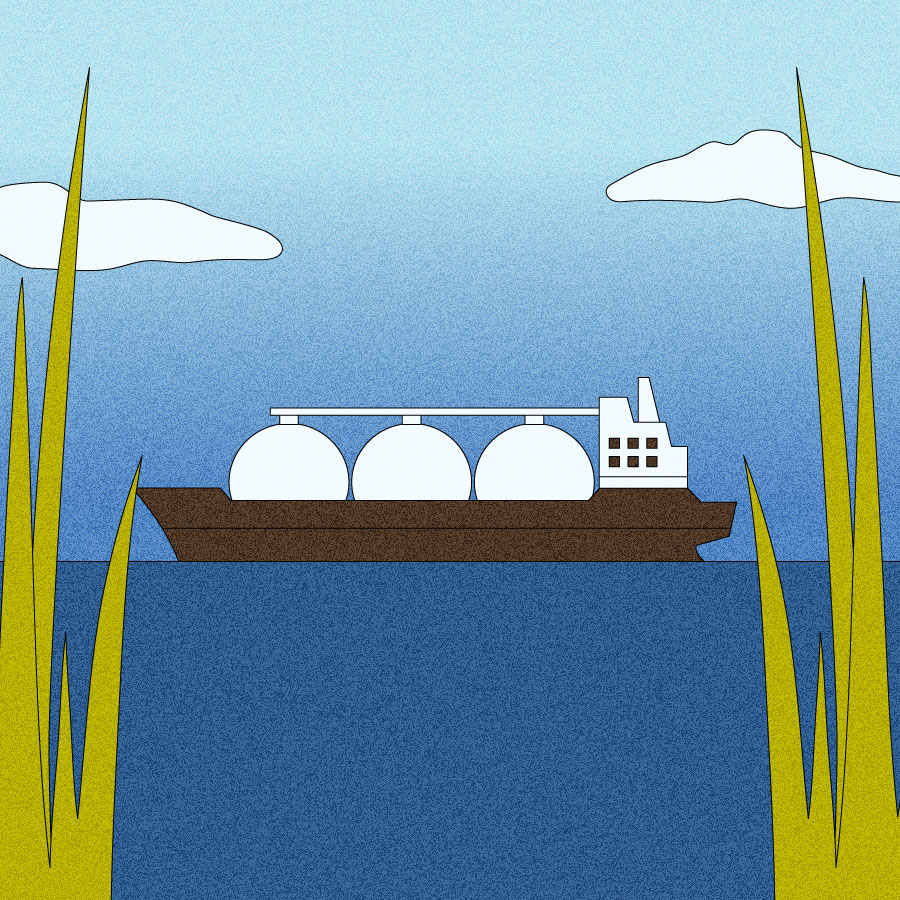
“Our community, we want to envision an alternative economy that doesn’t exploit the region, that doesn’t use our people as cheap labor, that doesn’t pollute the environment, that doesn’t accelerate climate change.”
Bekah Hinojosa, an organizer in Brownsville, Texas
The U.S. energy mix is heavily reliant on natural gas. It makes up the greatest share of electricity generation and home heating fuel use in the country. Over the past decade, the U.S. has also become the world’s leading exporter of natural gas, building out extensive infrastructure to convert the fuel into a form that’s easier to store and transport — liquefied natural gas, or LNG — and ship it to markets in Europe. More projects are in the pipeline, which could nearly double the country’s export capacity by the end of this decade, if approved by the Department of Energy.
But in January, the Biden administration announced a pause on approvals for new LNG terminals — a move that has been largely applauded by climate advocates and local leaders in the Gulf Coast, where the majority of current and proposed terminals are located. During the pause, the DOE will review the impacts of exporting natural gas on both domestic energy prices and the climate.
Natural gas is 70 to 90 percent methane, a greenhouse gas that’s about 30 times more potent than carbon dioxide in the short term. It’s also prone to leaking along its supply chain, which contributes to global heating and creates pollution and explosion risks for communities living near this infrastructure. But even in the course of typical operations, these terminals cause hazardous pollution from flares that burn off excess gas, from the massive amounts of fuel required to liquefy the gas, and from increased ship traffic.
Louisiana activist (and Grist 50 honoree) Roishetta Ozane told Grist reporters that the administration’s decision “shows that the government recognizes the need to protect the rights and well-being of [Gulf] communities.”
Communities like Ozane’s already face some of the worst pollution in the nation from the petrochemical industry, and LNG terminals threaten to worsen an already disproportionate burden. For some other communities, the battle against the LNG industry represents a last-ditch effort to prevent that same fate.

A construction site for a pipeline to bring gas to the Cheniere liquefied natural gas facility, which opened in 2018 near Portland, Texas. Houston Chronicle/Hearst Newspapers via Getty Images
“We’re a Gulf Coast community, but our community doesn’t look like the rest of the Gulf Coast,” said Bekah Hinojosa, an organizer in the city of Brownsville in Texas’s Rio Grande Valley (who was featured on our 2022 Grist 50 list). “We don’t have existing fossil fuel refineries here. Our port doesn’t look like the Houston ship channel. This is the first big industry trying to move into our low-income community.”
She and other local advocates have been fighting two major projects: Texas LNG and Rio Grande LNG, with the accompanying Rio Bravo pipeline that would bring fracked gas to the latter. These projects already have authorization from the Department of Energy, meaning that they won’t be halted by the Biden administration’s pause. But Hinojosa and her fellow advocates are continuing to wage their own defense. Their efforts have already yielded one victory in 2021 when a third project in the area, Annova LNG, was canceled, and they’ve successfully pressured customers and investors to back away from the others.
We spoke with Hinojosa to learn about the tools local communities like hers are using to push back against LNG expansion, as well as the fossil fuel-free future she hopes to create for her area. Her responses have been edited and condensed for clarity.
![]()
Q. What are some of the primary concerns with LNG in the Rio Grande Valley?
A. Our coastal communities in this region are 100 percent against LNG. (Editor’s note: These 2015 articles from the Port Isabel Press offer a sense of the scale of local opposition to LNG projects.) They’ve passed city resolutions against LNG [in] communities that are down the street from Brownsville: Port Isabel, South Padre Island, Laguna Vista, Long Island Village. And they oppose LNG because it would completely destroy their way of life. Their local economies depend on shrimping and fishing and nature and ecotourism. People come here from all over the world to see sea turtles, to hike and fish and shrimp and enjoy our unique wetlands. That’s what the economy of our coastal communities thrives on. And LNG would destroy that. They would dump pollution into the ship channel where shrimp lay their eggs, [and they would] dump pollution into our low-income communities.
We don’t have good health care here. People can’t afford expensive medical bills. That’s why the communities oppose the LNG projects.
Then we have the Carrizo/Comecrudo tribe, which are the original Indigenous people of this region. They oppose LNG because these projects would build on sacred sites — specifically, the Texas LNG project would destroy a known sacred Indigenous site called Garcia Pasture that’s on the National Park Service’s list of historic sites. It has ancestral burial grounds, village sites, artifacts, and Texas LNG wants to build right on top of that. And they have never consulted with the Carrizo/Comecrudo tribe.
Q. In your Grist 50 profile, you described your opposition strategy as “death by a thousand cuts.” Is that still the approach — fighting on every possible front?
A. Yeah, absolutely. We are actively pressuring insurance companies to withdraw from these LNG projects, [as well as] banks, private equity. We’re trying to stop tax subsidies for these projects, trying to prevent customers, different corporations from signing contracts to import the gas. We’ve been working with communities all over the world that don’t want to see their countries involved with these projects. I mean, essentially, we’re yelling at any and every company involved with Rio Grande LNG and Texas LNG to immediately drop these projects, and doing that in solidarity with other impacted communities. We [held two protests last week outside of corporate offices], one in Houston and one in New York, to stop Rio Grande.
Q. Is there action you would like to see at the federal level, beyond the pause on new LNG exports that the Biden administration announced in January?
A. Yeah, I mean, the pause doesn’t apply to the projects that we’re fighting in Brownsville. Unfortunately, they already have their DOE authorization. So we’re still urging the Biden administration to include these projects in the pause. I went to D.C. a few days after the pause was announced, and I met with DOE officials and a White House official. I and the Carrizo/Comecrudo tribe representatives urged the DOE to include these projects in the pause and to include meaningful community engagement as the DOE is figuring out what to do after the pause — and reminded them that our communities oppose these projects.
So we’re not backing down. We’re escalating the amount of protests that we’re doing to stop these projects. We’d like to see a plan and a pathway for LNG to be phased out and not continue to be approved.
Q. You have also been active in opposing the SpaceX launch site near Brownsville. Can you tell me about some of the compounding concerns there?
A. SpaceX is another type of industry here that is harming and polluting our community — and the launchpad is just a stone’s throw away from where the LNG terminals plan to build. We’ve already seen debris from the rocket explosions fall on the proposed LNG sites. We’ve been sending comments, letters, demanding meetings about the safety hazards of SpaceX next to LNG, and we’ve been left in the dark.
We are already dealing with explosion hazards from the rocket testing every year. My entire house started to shake — I felt an earthquake because of the last SpaceX explosion in November. We saw dust fall over the community last April from another explosion. Rocket pieces have already been raining down on our neighborhoods. And then LNG has its own explosion hazards. We’ve seen the Freeport LNG explosion that sent a blast that caused someone to fall off some jetties and split their head open. So we’re dealing with compounding explosion risks. And all of these issues are related — SpaceX actually uses LNG for rocket fuel, and they are proposing to build an LNG plant in another community down here.
Q. As you’re combating these industries, what is your vision for the Gulf Coast where you live in the next five to 10 years?
A. The Carrizo/Comecrudo tribe has been buying land near the port. They have a vision of an alternative economy for our community, and that looks like supporting their culture. They want to create jobs for local people to protect their sacred sites, for people to come and learn from their tribal community. Our community, we want to envision an alternative economy that doesn’t exploit the region, that doesn’t use our people as cheap labor, that doesn’t pollute the environment, that doesn’t accelerate climate change.
So we’re going to continue advocating for that. We want the Port of Brownsville to be clean. The public officials here just don’t have much of a vision — they’ve been failing our community. So we continue to keep having forums and making our voices louder about the future that we want and need for our Gulf Coast community.
— Claire Elise Thompson
There’s still time to nominate climate leaders for this year’s Grist 50 list! Do you know an organizer standing up to the fossil fuel industry on behalf of their community (like Bekah Hinojosa)? Or an entrepreneur working on an innovative new solution, or an artist, a chef, a policymaker, a farmer, a scientist, or another type of leader whose climate work deserves to be recognized? Use this form to tell us about them.
Local communities on the receiving end of natural gas exports are also resisting the construction of terminals where they live. In the town of Binz on the German island of Rügen, protestors formed a human chain on the beach last April to show their opposition to a proposed LNG terminal on the island.
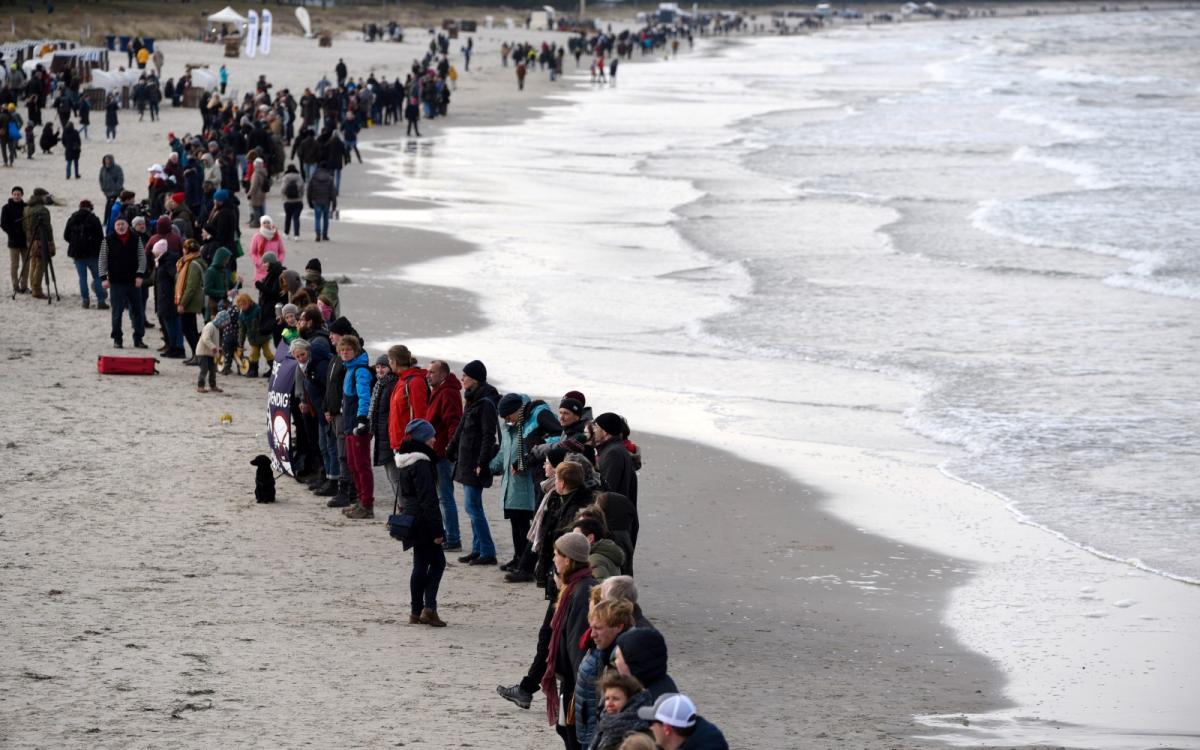
This story was originally published by Grist with the headline How this organizer is fighting the liquefied natural gas industry where she lives on Mar 6, 2024.
The volume of electronic waste doubles about every six years as technology plays a more…
The post Best of Earth911 Podcast: Alchemy’s James Murdock on Building a Circular Economy for Technology appeared first on Earth911.
This story was produced by Grist and co-published with Houston Public Media.
Leisa Glenn spent decades living in the Fifth Ward, a historically Black neighborhood in Houston, known for having one of the city’s best views of downtown. Every July 4th, Glenn, 65, and her neighbors would stream out of their houses into the summer heat and crowd onto front porches to watch the fireworks display.
She remembers the smell of the barbeque pit charring hot dogs and how neighbors would gather on every surface outside to watch: on top of cars, in folding chairs, and on porch steps.
“To look at the skyline at night, downtown, every night in different colors, and when they light it up — it’s like nothing you’ve ever seen before,” said Glenn.
Over the years, however, this crowd got smaller and smaller. Neighbors fell sick. Others moved away.
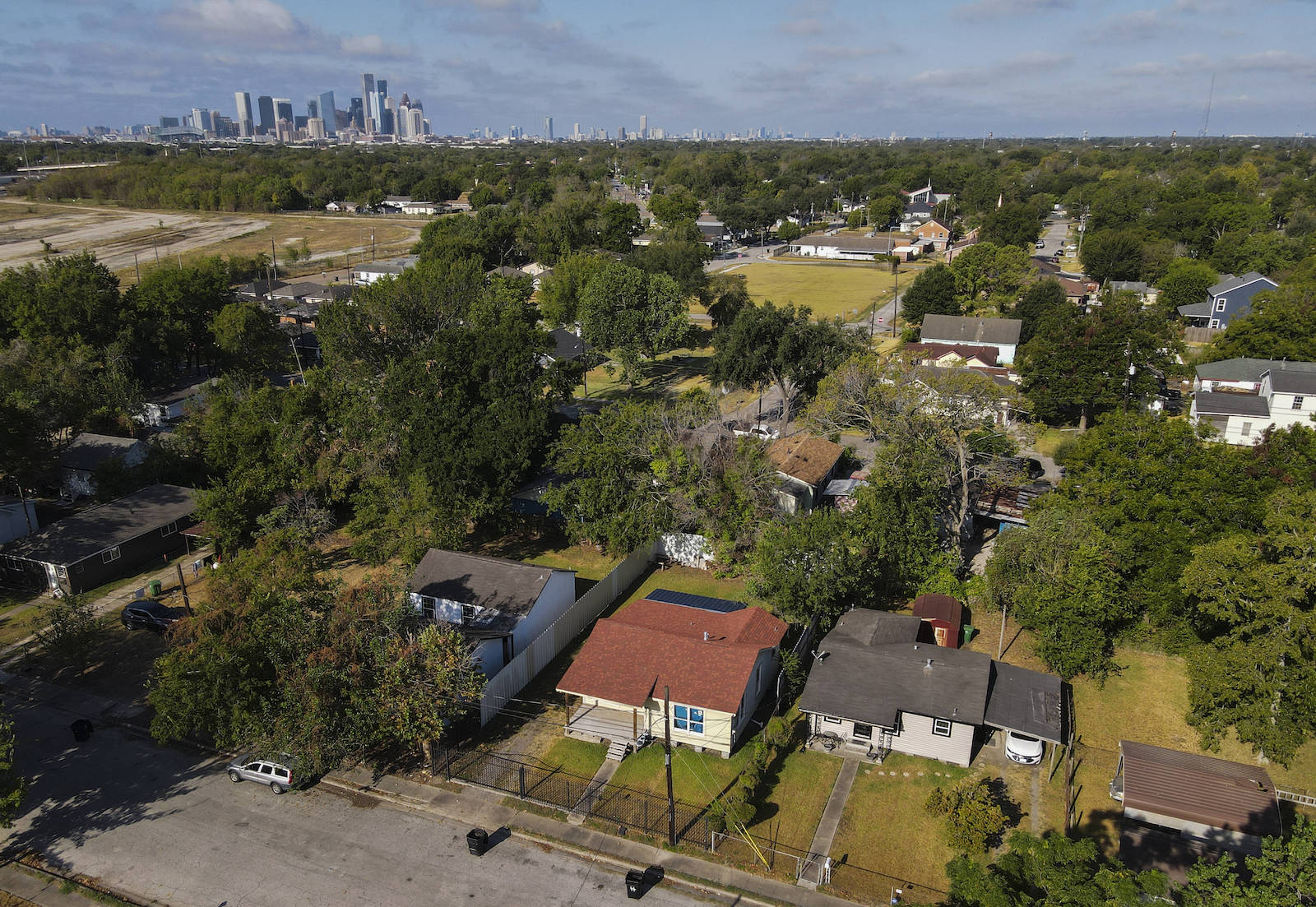
Buried beneath the Fifth Ward and its neighboring community, Kashmere Gardens, is an expansive toxic plume of creosote derived from coal tar. Historically, creosote has been used in the United States to preserve wood such as railroad ties and utility poles; it has also been linked to health issues such as lung irritation, stomach pain, rashes, liver and kidney problems, and even cancer, according to the Agency for Toxic Substances and Disease Registry and the Environmental Protection Agency.
Glenn remembers the old Houston Wood Preserving Works plant in the neighborhood that sat adjacent to the Englewood rail yard, which is the biggest rail yard in the city and one of the largest in the Union Pacific system.
For decades, its creosote was ever-present in the community: Strong odors permeated the neighborhood. Kids swam in a lagoon filled with waste from the factory. And when it rained, a rainbow oil slick would coat the streets.
While the actual facility is long gone, shut down in 1984, the creosote plume it created persists. The site is currently owned by Union Pacific Railroad, which acquired it in a merger with the Southern Pacific Railroad in the 1990s.
Glenn can clearly recall when the cancer cases started. It was the early 1990s, and the first person on her street to get sick was Carolyn, only 35 when she died, according to Glenn.
“So it really started at the corner with Carolyn,” she said. As more people started getting sick, “it just started trickling down the street.”
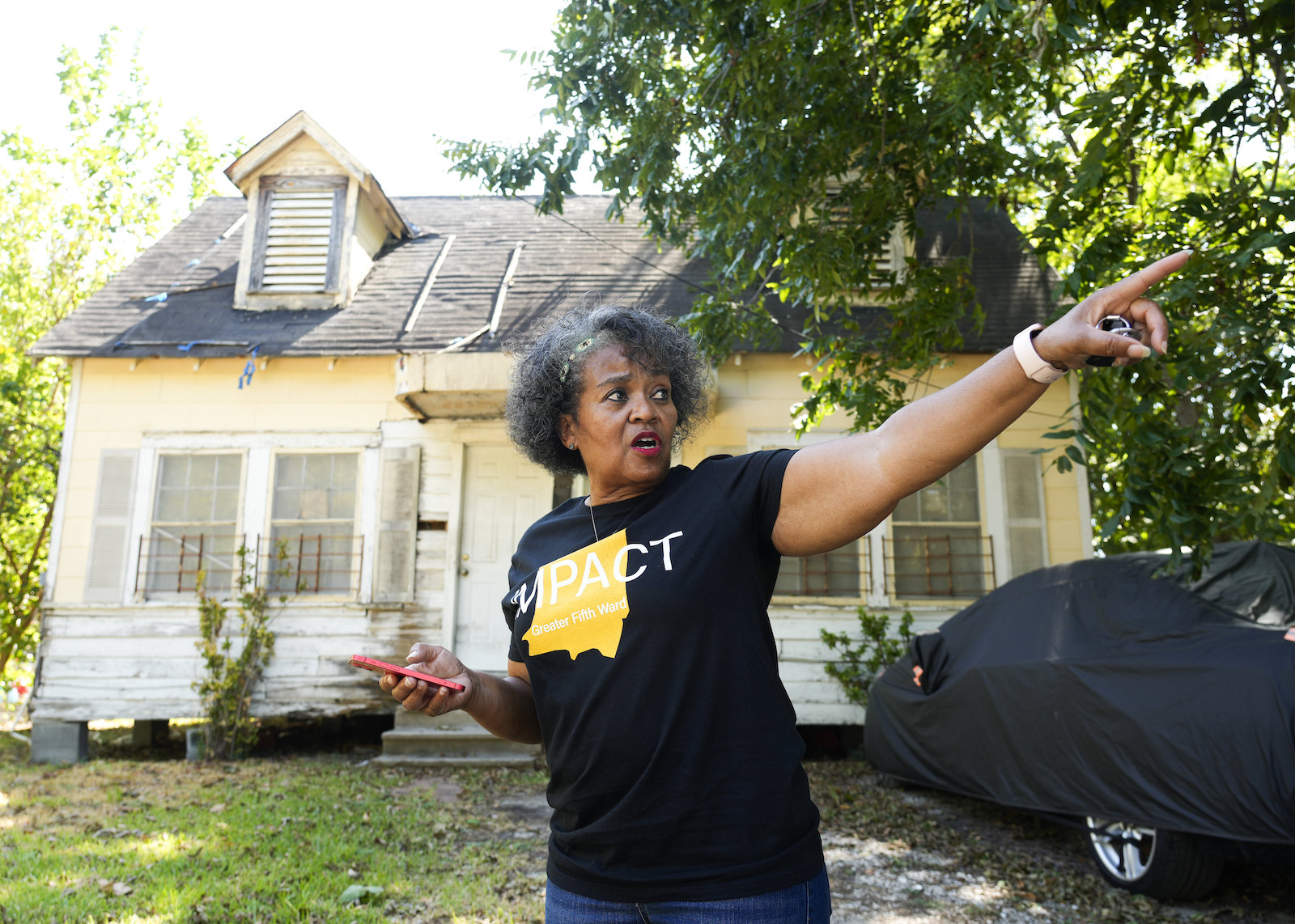
When Glenn talks about the people who have passed away, she mentions there’s not enough time for her to name all of them. But she starts ticking off people on the list: Mr. CL, Ms. Osborn, Mr. Johnny, Ms. Barbara Beale, her former friend and collaborator, and, of course, her mother Lucill.
Finally, in her late 30s, Glenn left after dealing with ongoing stomach issues for years. She often experienced a combination of coughing and pain that would get so bad she would throw up. Sometimes she coughed up blood. To this day, she has to take medication.
In 2019, the Texas Department of Health and Human Services established three separate cancer clusters in the Fifth Ward and Kashmere Gardens. A 2021 report from the Texas Department of State Health Services established one childhood leukemia cluster, confirming what residents had been saying for years.
When it comes to creosote, “this was a very, very high exposure area,” said Loren Hopkins, chief environmental science officer for the Houston Health Department. “We know that exposure to these chemicals causes these cancers,” she told Grist.
She also noted that in cancer cluster studies, the only types of cancers investigated were ones known to be caused by creosote and other cancer-causing chemicals found at the Union Pacific Railroad site.
It’s hard to flesh out what illnesses are caused by past exposure to creosote from when the facility was open versus current exposure to the plume lurking beneath residents’ feet. The U.S. EPA is currently conducting comprehensive testing in conjunction with Union Pacific to understand these competing timelines and exposure risks. Testing could take up to a year to complete.
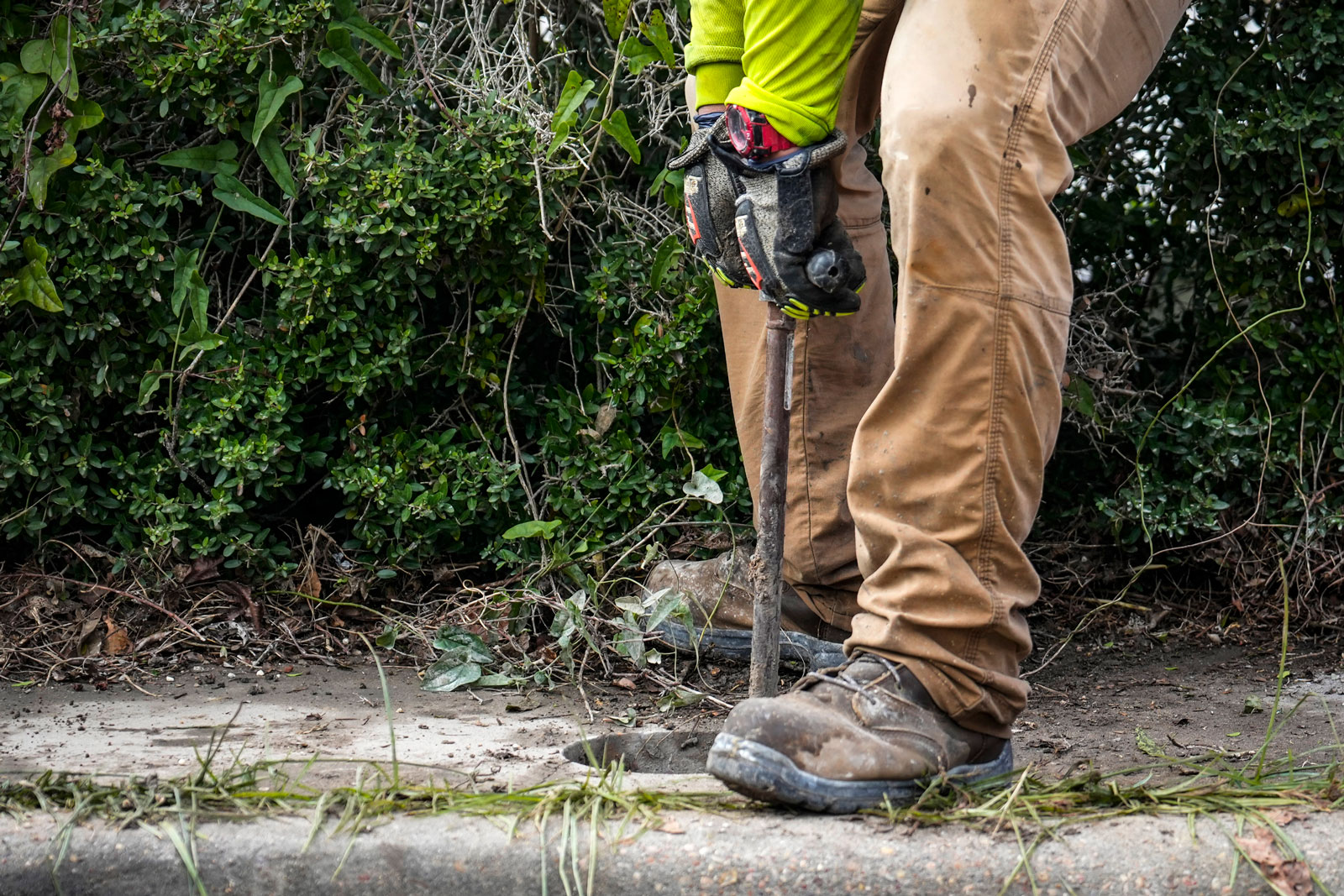
Last July, after years of pleas from residents and several scientific and public health studies, Houston’s City Council announced a plan to relocate residents. In September, it approved $5 million to help residents move away from the contamination. Then-Mayor Sylvester Turner celebrated the funding, but warned it needed to be just the beginning: His office estimated relocating all 110 lots on the plume would cost about $24 million. As of last summer, 10 families have signed up for the buyout plan.
Last month, Houston’s new mayor, John Whitmire, allocated the first $2 million of those funds to Houston’s Land Bank to begin relocations.
There is a long history in the United States of companies paying to relocate residents rather than cleaning up polluted communities, from Diamond, Louisiana to Detroit, Michigan. But it is a rarer case when a city steps in to remediate this company-caused harm. Public health and environmental justice experts told Grist that Houston may be one of the first major cities in the United States to facilitate residential buyouts not on the basis of a climate disaster, but because of pollution.
After years of residents in the area trying to get Union Pacific to come to the table to discuss remediating the area, the city took an unprecedented step of offering the voluntary buyouts to residents on its own dime.
That response “feels unique and somewhat novel, in the history of U.S. environmental justice movements,” said Manann Donoghoe, a senior research associate at the Brookings Institute. He also lauded how quickly the city seemed to acknowledge and act once the cancer clusters were established. “What’s most interesting for me, as somebody who writes about climate reparations, was to see the city’s response,” he said. “To see immediately the mayor coming out and saying that, ‘Yes, this is an injustice, this is something that should be addressed.’”
But with city money involved, concerns are being raised by members of IMPACT, a local group that advocates for the people who live near the creosote plume, about what will happen to the land once residents are relocated. Further complicating the issue is that no one is sure about the risk.
When current Fifth Ward resident Mary Hutchins, 61, looks around her neighborhood, it’s clear that things are changing. Streets have been resurfaced and there’s a new, massive residential and retail complex that opened last year in Fifth Ward, which includes a sprawling apartment complex with 360 units, nearly 250,000 square feet of office space, and over 100,000 square feet of retail, according to the Houston Chronicle.
Hutchins is concerned that just as plans have solidified for residents to relocate, this development could price the original homeowners out of the area — meaning that any future cleanups would only benefit newer residents.
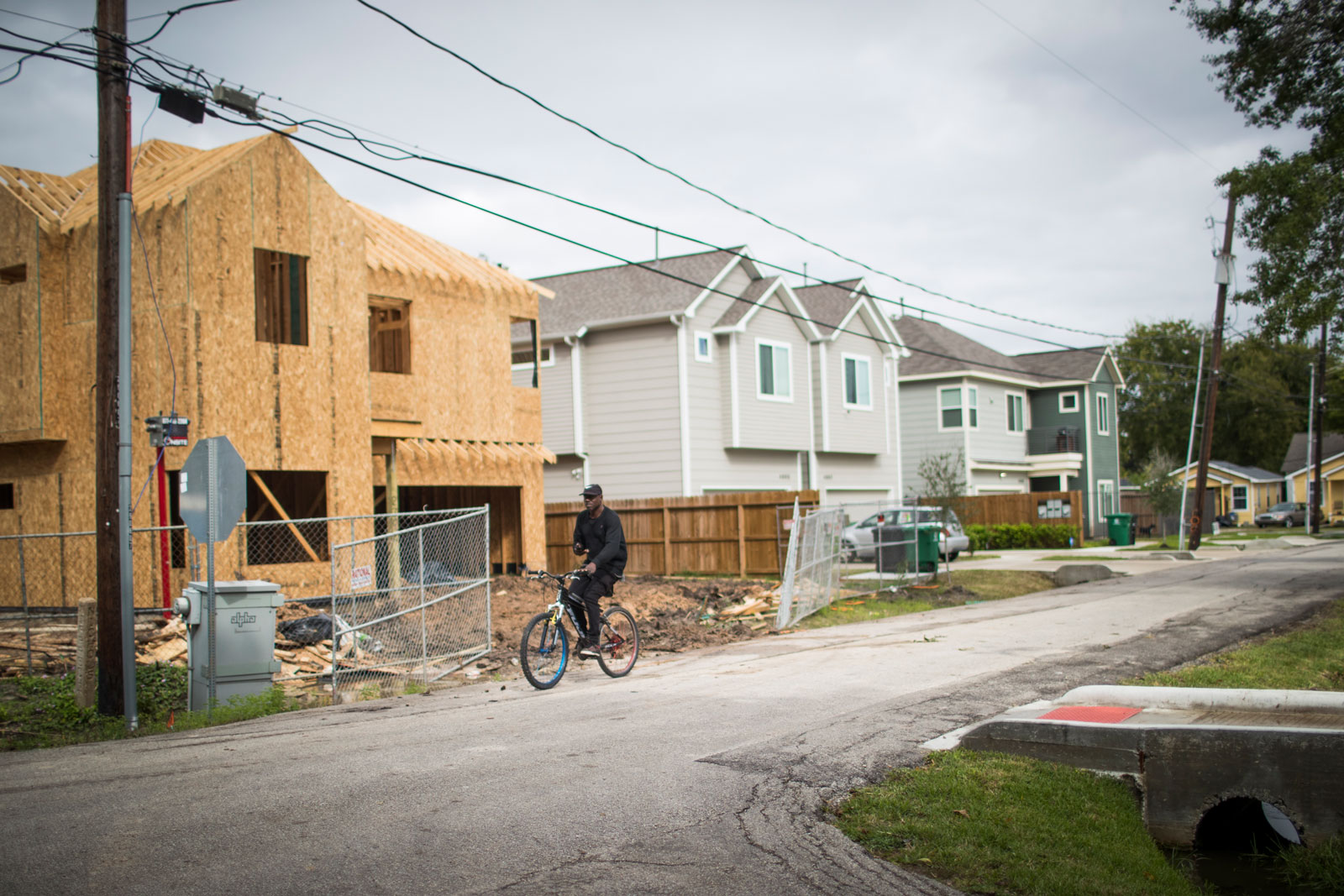
“So people who once lived in this neighborhood, they could never come back here, never. Because they can’t afford it,” Hutchins said. “Now it’s like they’re building all around us — everything is up-and-coming.”
At a recent city council meeting, Steven David, deputy chief of staff for Mayor Whitmire, presented new research that confirmed what Hutchins had observed: Since 2019, the city has issued 88 permits for new construction of single-family homes and 17 permits for new multi-family homes. Another concerning development is that the incomingresidents weren’t warned about the cancer cluster. In response, Mayor Whitmire put a pause on development in the Fifth Ward. He also thinks the bill for cleanup should be funded by Union Pacific.
“They have to assist with the cleanup of the mess that they created,” he said.
Meanwhile, residents are left in limbo. Do they stay or do they go?
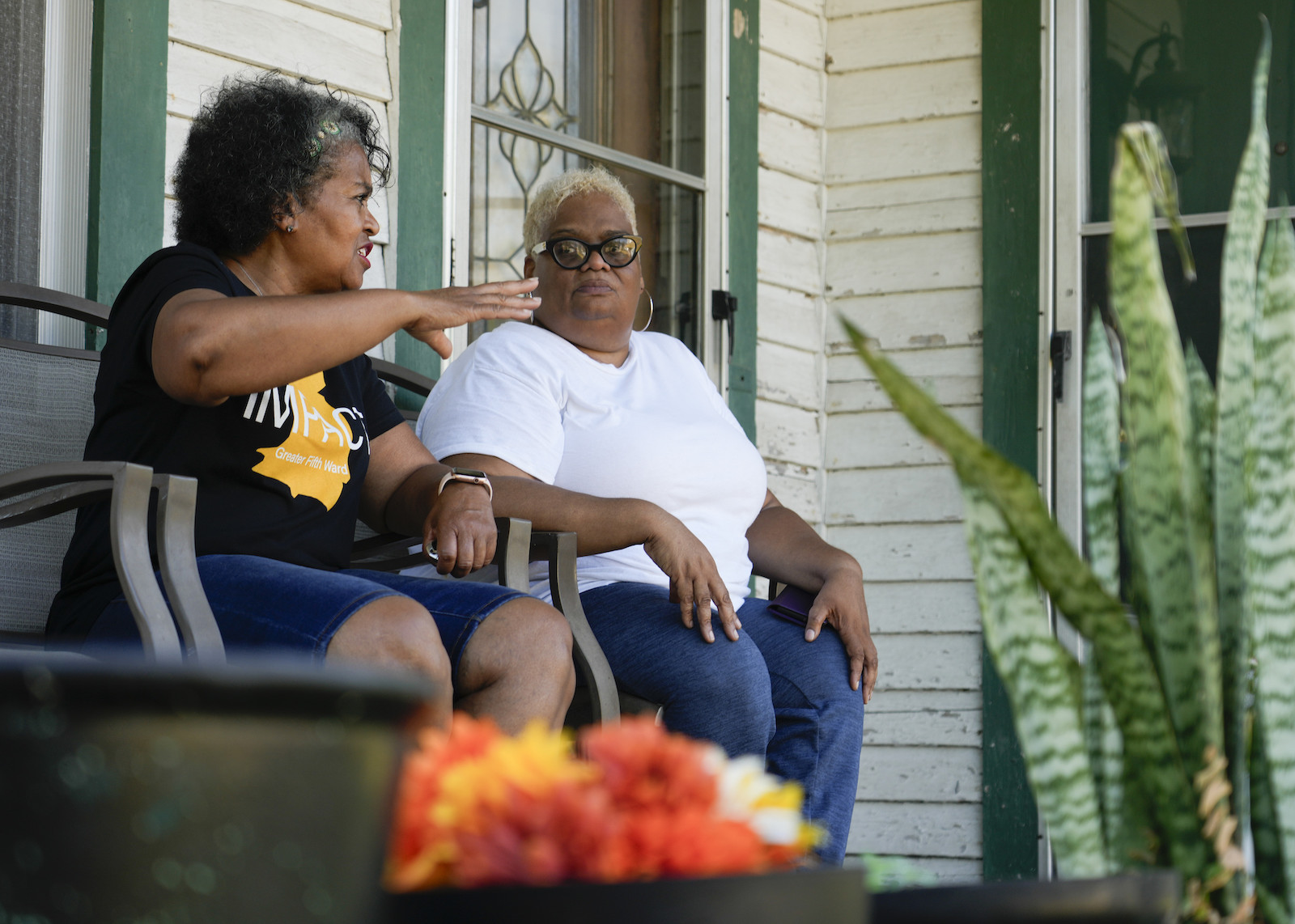
Houston’s Fifth Ward neighborhood is a part of the city’s original ward system. Founded after the Civil War by a racially mixed group of Black freedmen and white residents, by 1880 the neighborhood was predominantly Black and became an epicenter for Black culture in Houston.
Glenn, Hutchins, and others who grew up in the neighborhood describe it as extremely tight-knit.
“If your mom was gone all day, or had some business to take care of, you could always knock on the door and say, ‘My mom ain’t home,’” Glenn said. Whoever answered always invited you in.
“‘Okay, come on over here and go get the rest of ’em. Y’all gone eat.’” Glenn recounted. “It was a loving neighborhood.”
The memories of creosote are just as strong.
What angers Glenn was the silence in the wake of so many deaths, and the fact the neighborhood had to look for answers on their own.
“And nobody still didn’t say anything after all these people had died,” she said. “We just knew it was something, but we couldn’t figure out what it was.”
Glenn is the president of IMPACT. The group has been raising awareness of the issue since 2014, when she cofounded the group with Sandra Small, the former president who passed away in 2021 from cancer.
The group started by gathering residents to talk about what had happened to their neighborhood, but it evolved into organizing protests and attending public meetings to incite action. At its first protest, Glenn created the group’s unofficial mascot, creosote man: a skeleton with a T-shirt emblazoned with the words “Creosote killed me.” The group has used him ever since to raise awareness of lost neighbors and loved ones to cancer in the area.
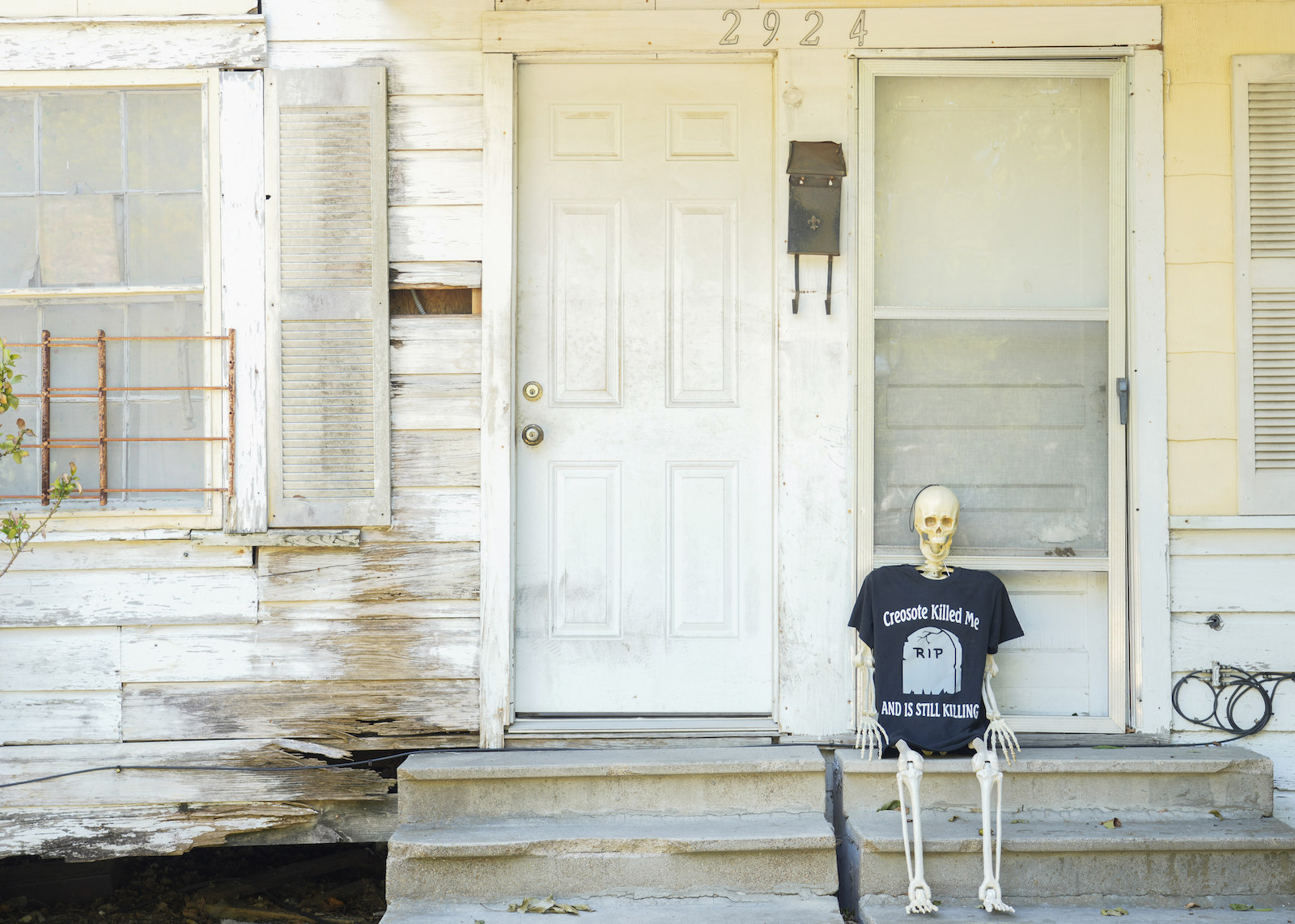
IMPACT soon started to collaborate with scientists and the city, zeroing in on the old wood preservation plant as the likely source of the creosote contamination that was sickening residents. Next, IMPACT focused on finding solutions. The relocation option came out of early conversations with residents, according to Hopkins from the city’s health department.
She was present at those meetings in 2019 and remembers how important a voluntary buyout option was to residents.
“This was a request by the community,” said Hopkins, “and their reasons were not associated with a specific contamination level. It was associated with the stress and concern, and the devaluation and the injustice of it.”
Often the choice between staying and leaving isn’t much of a choice. Most of the people located in this part of Houston grew up here, in houses that were passed down from generation to generation.
Reverend James Caldwell grew up in the Fifth Ward; his parents moved there in the early 1950s. He spent years as an assistant pastor at the Fifth Ward Baptist Church. He now is associated with the St. Mark Missionary Baptist Church in Humble, Texas.
In 2008, he founded the Coalition of Community Organizations, or COCO, in Houston, an organization that calls for action on environmental injustice, disaster recovery, and fair housing in Houston.
“The creosote issue, it has been decades old, decades,” Caldwell said. “It’s nothing new. A lot of lives have been lost. And there are still a lot of illnesses, sicknesses as a result of it.” He’s lost two people to cancer in the area, including former IMPACT member Barbara Beale and a friend who died at 11 from childhood leukemia.
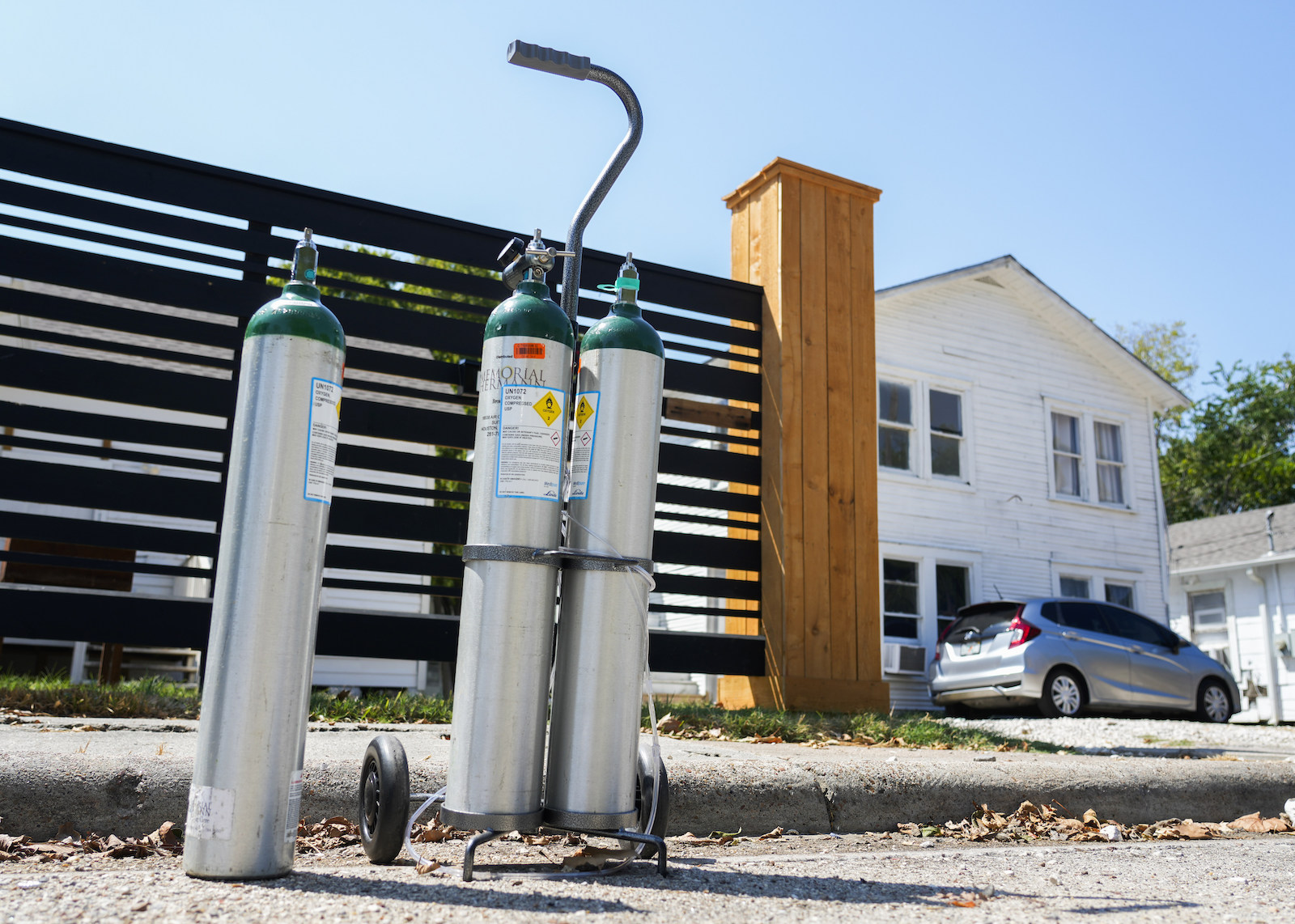
Caldwell lists all the burdens put upon the people of the Fifth Ward and Kashmere Gardens: the cancer clusters, the reluctance of Union Pacific to do cleanup, the years of begging someone to do something.
“Do you have to lose your history, your culture, or your identity in that process?” Caldwell asked.
Denae King, the associate director of the Bullard Center for Environmental and Climate Justice at Texas Southern University, grew up in Kashmere Gardens.
You have to take racial inequities into account, she said, when you ask people in her old neighborhood to leave their homes.
“In the Black community, it’s quite an honor to own property, to have property be passed down from your grandparents or your parents,” King told Grist.
That is going to weigh on the minds of the residents who have to decide whether to stay or go. It would be hard not to think, “But my family fought hard and my parents worked hard to buy this property,” she said.
Robert Bullard, founder of the Bullard Center at Texas Southern University, has studied the links between race and toxic pollution for over 50 years. His first seminal work, which established him as the father of environmental justice, focused on landfill-associated pollution in Houston in 1979.
Given his deep ties to the city, he understands what’s at stake when a community is contaminated — and even more so when it is threatened to be torn apart.
“Relocation means loss of community and loss of neighborhoods, loss of familiarity, of one’s history,” Bullard said. “It’s very hard to leave a community that you grew up in, and you thought was going to be your homestead and your American dream.”
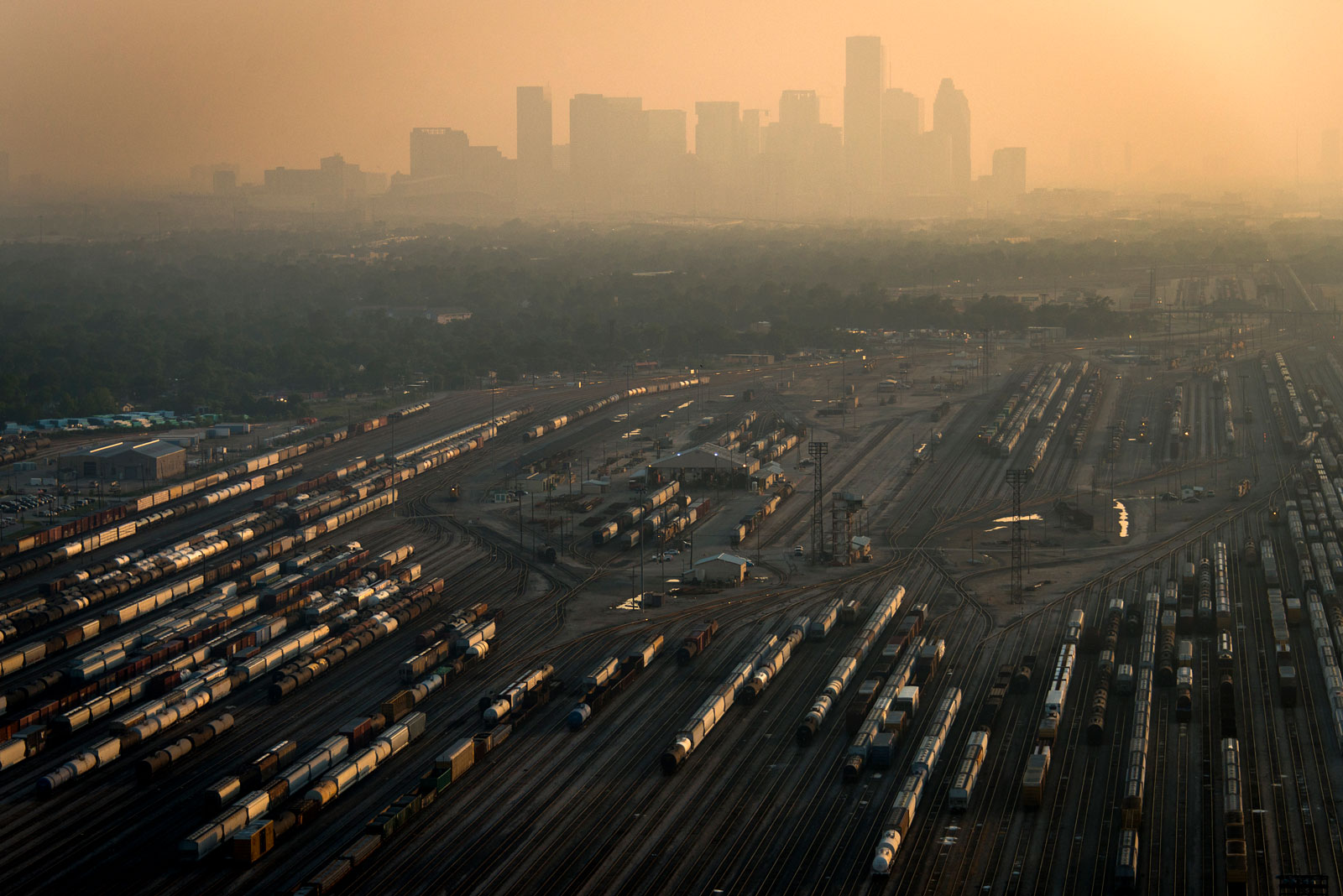
The city’s plan to relocate residents away from the toxic creosote plume was the result of years of careful planning, collaboration, and conversations with the community, according to Hopkins.
Union Pacific, which has owned the land for more than 25 years, has so far denied all responsibility for illnesses in the community. Last year, the company narrowly interpreted data released by the state as having found no cancer risk, according to the Houston Chronicle. A spokesperson for the Texas Department of State Health Services told the Chronicle that the results of the report “should not be considered a comprehensive assessment.”
In a comment to Grist, Union Pacific noted its current testing collaboration with the EPA to study air and soil contamination at the former Houston Wood Preserving Works site, and said it remains dedicated to understanding the pollution risk and conducting remediation. “Since inheriting the site in a 1997 merger with Southern Pacific, we have completed extensive remediation and cleanup,” a Union Pacific spokesperson said in an email, referring to work done at the site of the former wood preserving plant.
“While the latest round of testing is underway, our collaboration with the Fifth Ward community, the City of Houston, Harris County, and the Bayou City Initiative remains active and steadfast, and we will maintain transparency and open communication throughout the process.”

The results of testing will prove vital to the community’s next steps. Many residents are caught between having to stay and wanting to stay. Houston is an expensive city to live in, Glenn says, and many of the neighborhood’s longtime residents are at retirement age, and therefore living on fixed incomes.
“A lot of them ain’t choosing to stay there. They have to stay there,” she said.
For Hutchins, she just wants to be sure she knows her risk before leaving her home.
“If it’s not safe [in the Fifth Ward] then of course I wouldn’t want my grandkids nor my daughter here,” Hutchins told Grist. “I believe we would need to get out.”
But she wants to be sure. She’s skeptical after seeing the revitalization happening in parts of her neighborhood, and is questioning the motives of people who might want to develop in the area, since the contamination is still an issue.
“Why would they waste their money and do that?” she said.
Even if residents do voluntarily participate in buybacks of their property, the question of where they will go next is difficult to parse. A Bank of America report published last year identified Houston as one of four cities that are experiencing housing shortages amidst rapid population influx as people seek to take advantage of robust economic opportunities. This could affect the city’s plan of helping residents locate new places to live.
The city is planning on using its land bank — a nonprofit group that recycles abandoned and condemned properties into new housing — to facilitate payouts and identify potential relocation spots for affected Fifth Ward residents.
The city also wants to provide support in securing health insurance for those affected by the cancer clusters, which could be one way that experts say Houston could lead the way with legacy pollution problems.
For residents, long-time activists, and politicians alike, this has been a long and arduous process.
“The relocation and the buyout and the payments for property and homes, it might sound like a success story,” said Bullard. “But that’s often not the end of the story. The end of the story is where will people find housing, replacement housing, within this area, where affordable housing is very limited.”
While the details of Houston’s relocation initiative remain in debate, from its timeline to its financing to its logistics, there’s one thing echoed across stakeholders: Residents, advocates, scientists, and politicians all want to see Union Pacific pay.
“We didn’t ask to be contaminated,” said Glenn. “We didn’t go over there bothering Union Pacific. Union Pacific bothered us.”
Glenn wants more aid for those affected, from top-of-the-line cancer care to assistance with everyday expenses.
“I hear some people say, ‘Well I ain’t got food, because I had to pay this bill and I had to get my medicine, I had to go to chemo,’” she added.
These bills add up and the community has been paying the cost literally and figuratively for decades. Residents of the Fifth Ward and Kashmere Gardens filed a $100 million lawsuit against Union Pacific in 2022 for wrongful death on behalf of deceased residents in the area. It eventually was ruled as abated in early 2023, the term for when lawsuits are halted because the suit cannot go forward in the form it was filed in.
“Union Pacific should have set up a fund — just a once-a-month fund to try to help them out with what’s going on,” she said.
City Council Member Tarsha Jackson, who represents the Fifth Ward, thinks a lot more could be done to address the problem, which has been decades in the making. She’d love to see the same political will aimed at helping residents in the Fifth Ward and Kashmere Gardens as there was for people affected by Hurricane Harvey.
“Harvey was a disaster,” she said. “In my opinion, this contamination, it’s a disaster.”
Hutchins, meanwhile, wants to see investment in revitalizing the area. She wants to see cleanup of the area on the table as a real option.
“I would love for this to be a community again. It’s like a ghost town,” said Hutchins.
But only, she said, “if it was safe for families to come back.”
This story was originally published by Grist with the headline Industry poisoned a vibrant Black neighborhood in Houston. Is a buyout the solution? on Mar 6, 2024.
An illegal toxic dump site in Croatia, the theft of water from a major aquifer in southern Spain, illegal trading of ozone-depleting refrigerants in France: This is just a sampling of the environmental crimes that European countries are struggling to stop. The lack of accountability for these acts stems in part from the European Union’s legal code, which experts say is riddled with vague definitions and gaps in enforcement. That’s about to change.
Last week, EU lawmakers voted in a new directive that criminalizes cases of environmental damage “comparable to ecocide,” a term broadly defined as the severe, widespread, and long-term destruction of the natural world. Advocates called the move “revolutionary,” both because it sets strict penalties for violators, including up to a decade in jail, and because it marks the first time that an international body has created a legal pathway for the prosecution of ecocide.
“This decision marks the end of impunity for environmental criminals and could usher in a new age of environmental litigation in Europe,” wrote Marie Toussaint, a French lawyer and EU parliamentarian for the Greens/European Free Alliance group, on X.
Environmental crime is estimated to be the fourth most lucrative illegal activity in the world, worth an estimated $258 billion annually, and it’s increasing every year, according to the United Nations Environment Programme and the International Criminal Police Organization, known as Interpol. Environmental offenses are often linked to other forms of organized crime, such as smuggling and money laundering.
The new directive uses the term “ecocide” in its preamble, but does not criminalize the act by laying out a legal definition. (The most widely accepted definition of ecocide was developed by an international panel of experts in 2021.) Instead, it works by providing a list of “qualified offenses,” or crimes that fall within its purview. These include pollution from ships, the introduction of invasive species, and ozone depletion.
This list is “broad but by no means exhaustive,” said Jojo Mehta, a U.K.-based environmental advocate and co-founder of the campaign Stop Ecocide, in an email. The directive makes no mention of, for instance, illegal fishing and carbon market fraud. “Within hours of the news breaking, we were being emailed by a range of civil society actors asking ‘but will such-and-such damage be covered?’” she added.
The new law holds people liable for environmental destruction if they acted with knowledge of the damage their actions would cause. This aspect of the law is important, experts said, because it means that a permit is no longer enough for a company to avoid culpability.
“If new information shows that behavior is causing irreversible damage to health and nature, you will have to stop,” a member of the European Parliament from the Netherlands, Antonius Manders, told Euronews.
Advocates like Mehta hope that the EU’s move will have influence beyond Europe’s borders. The principal goal of the Stop Ecocide campaign is for the International Criminal Court, or ICC, to designate ecocide as the fifth international crime that it prosecutes, after crimes against humanity, war crimes, crimes of aggression, and genocide. At the moment, environmental destruction can only be prosecuted as a war crime at the ICC, and limitations in the law make this extremely difficult to do.
The campaign has drawn a diverse group of supporters. The small island of Vanuatu has called for the international criminalization of ecocide as a means of limiting climate warming emissions, while the Ukrainian government has argued for using it as a tool to hold individuals accountable for environmental destruction in wartime. The latter’s calls escalated last summer after Russia destroyed the Kakhovka Dam in southern Ukraine, flooding over 230 square miles, killing scores of people, and spreading chemical pollution across the land.
Kate Mackintosh, the executive director of the Netherlands-based UCLA Law Promise Institute Europe, told Grist that the ICC is unlikely to adopt an ecocide law if other countries do not do so first.
“It’s not something you can just pull out of thin air,” she said, adding that any international legal doctrine has to have a precedent on the national level. “That’s the way states are going to accept it.”
The EU’s 27 member states will have two years to adapt the new legislation into their penal codes. Afterwards, their implementation must be reviewed and updated at least once every five years using a “risk-analysis based approach,” to account for advancements in experts’ understanding of what might constitute an environmental crime. Mehta said that despite its omission of some important offenses, the law sets an important example for other countries. Several days before the EU vote, Belgium adapted its criminal code to include the directive, making it the first country in Europe to recognize ecocide as a crime.
The ruling “shows leadership and compassion,” Mehta said. “It will establish a clear moral as well as legal ‘red line’, creating an essential steer for European industry leaders and policymakers going forward.”
This story was originally published by Grist with the headline A new EU ecocide law ‘marks the end of impunity for environmental criminals’ on Mar 6, 2024.